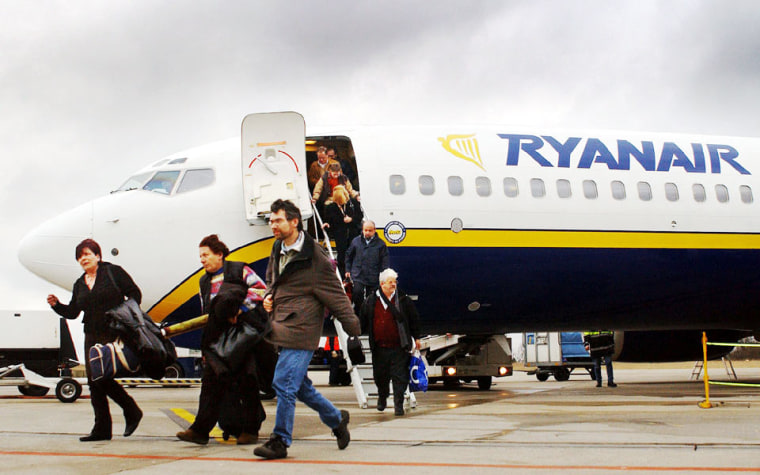By now we’ve all heard about the amazing deals on Europe’s low-fare carriers. Industry leader Ryanair even goes so far as to occasionally offer seats for free (passengers pay only the flight taxes and service charges, generally $25 and up each way). At this point there are around 60 upstarts crisscrossing the Continent, many with names that don’t exactly instill confidence in the average American, such as Geneva-based Flybaboo. Combine that with the recent failures of JetGreen, Duo, JetMagic, Volareweb.com, and V Bird, and many travelers are uneasy about booking with a low-fare carrier, no matter how cheap it comes.
Info by Internet: The airlines keep costs down almost any way they can, and that means passengers usually need to research options and book tickets over the Internet. With so many routes and carriers that use multiple (or no) hubs, simply finding out which airline flies where can be difficult. A handful of search engines, including searchlowestfares.com, wegolo.com, skyscanner.net, applefares.com, and openjet.com, come in handy, allowing you to plug in a desired connection and see what, if anything, is possible. Using skyscanner.net, for example, we requested a fare from Düsseldorf to Budapest with a week’s advance purchase and were presented with a $60 one-way direct flight from Air Berlin. It’s a good idea to punch in options on two or three of the search engines, however, because none are perfect, and some don’t come close to being thorough (applefares.com and openjet.com only search seven carriers). Also, check out attitudetravel.com/lowcostairlines/europe, which has a map of the Continent with routes and links to carriers, as well as a regularly updated list of deals. Don’t assume that the low-fare carriers always have the lowest fares, however. One study compiled by England’s consumer council for air travelers (caa.co.uk/auc) found several instances in which flights on British Airways were actually cheaper than similar routes on Ryanair.
No frills? That’s for sure: In general, you can forget about assigned seating, complimentary beverages or meals, and decent legroom. Some of the airlines, such as Ryanair, take the no-frills label to the extreme—the carrier was sued recently because it charged a handicapped passenger for wheelchair service. In another cost-cutting move (or profit-making, depending on how you look at it), there typically are strict baggage policies: Germanwings, for example, allows one checked bag per passenger, and charges $8 per kilo over the 20-kilogram (44-pound) limit. What’s more, if you’re not on a direct flight, your luggage may not be checked through to your final destination, leaving you with the responsibility of picking up bags and rechecking at stopovers.
It’s also necessary to look closely at the airport situation. The upstarts tend to use smaller, secondary airports that are far from the city center. Ryanair frequently flies out of London Stansted, which is 25 miles farther from the city than Heathrow. The many low-fare carriers that fly into a German airport called Frankfurt-Hahn rarely make a point of telling customers that it’s 75 miles, or two hours by bus, away from Frankfurt. On the positive side, the smaller gateways are less crowded, with quicker check-ins and shorter walks to the gate. And a few secondary airports are actually closer to the city than their larger counterparts. You’ve got to crunch the numbers, adding in taxis and other costs, and factor in convenience before making plans.
Risks and Red Flags: Europe’s airline industry is even more volatile than ours, and there’s no telling who’s going to go belly-up next. Just like back home, it’s smart to not book too far in advance, though upstarts such as EasyJet, Ryanair, Germanwings, and BMIbaby aren’t expected to disappear anytime soon. Laws vary from country to country, so generalizing about what happens when a carrier goes under and stops flying is impossible. Tickets are supercheap to begin with, and consumers shouldn’t expect much, if any, compensation. (Sometimes other airlines will step up and honor their former competitors’ tickets, but they’re not always required to do so.)
And flight delays are even more aggravating on low-fare airlines. Nearly all of Europe’s major airlines have voluntarily agreed to provide food and accommodations to passengers if there are extended delays or cancellations, as part of the EU’s Passenger Service Commitment. The upstarts have yet to sign on, so they’re under no such obligation.
